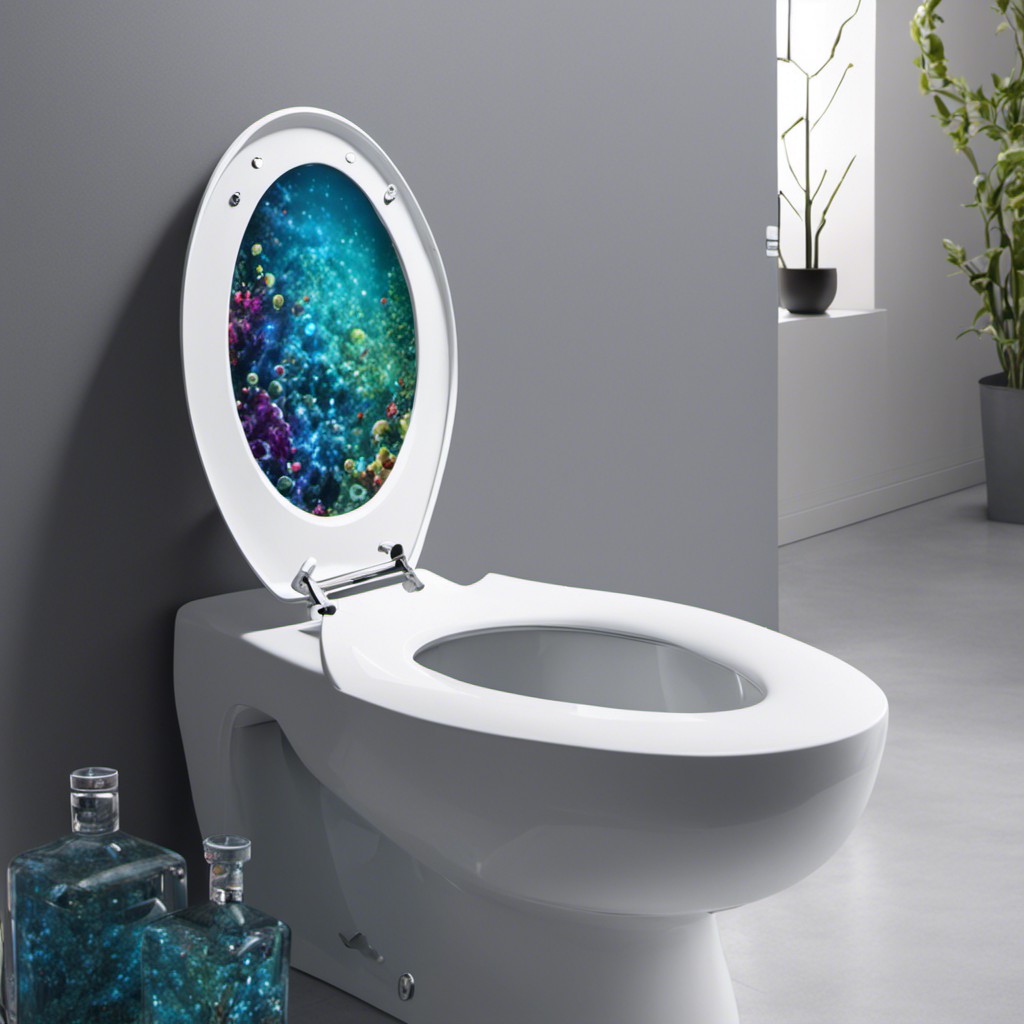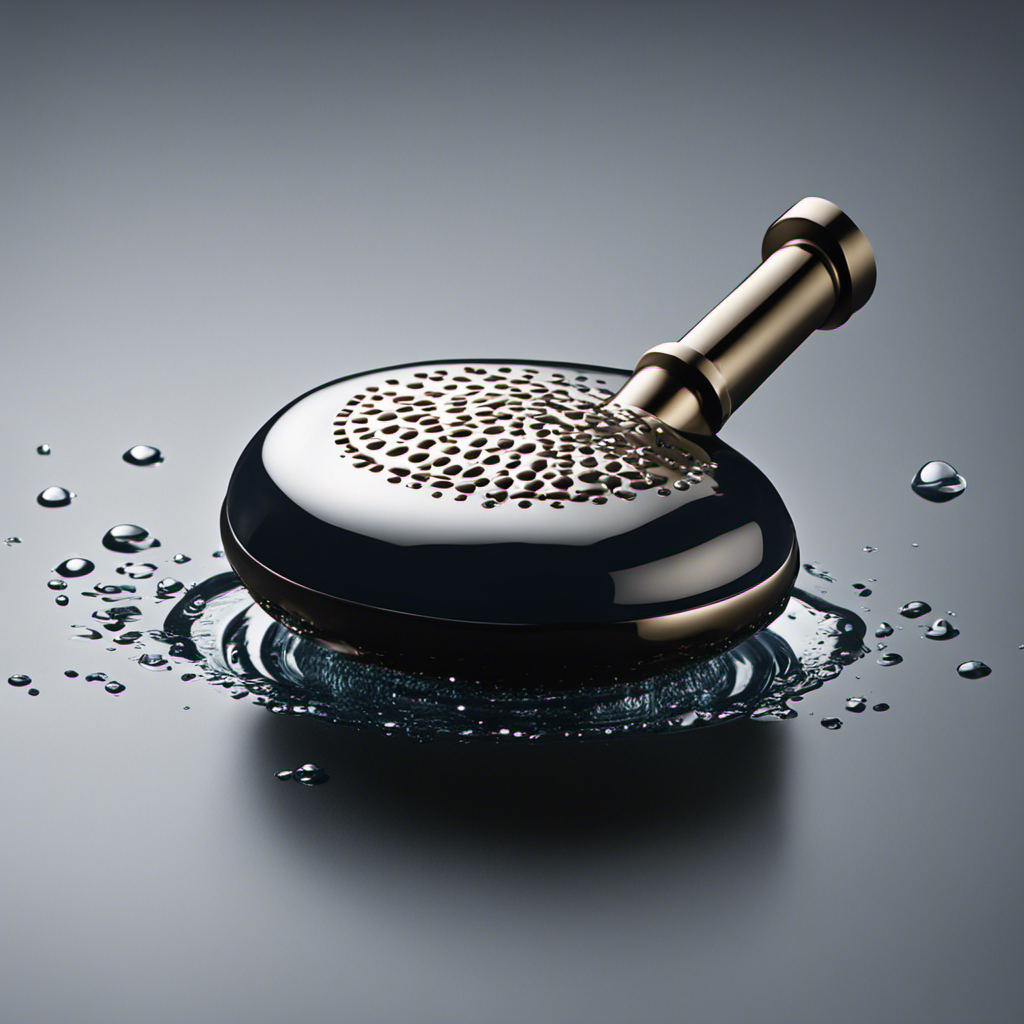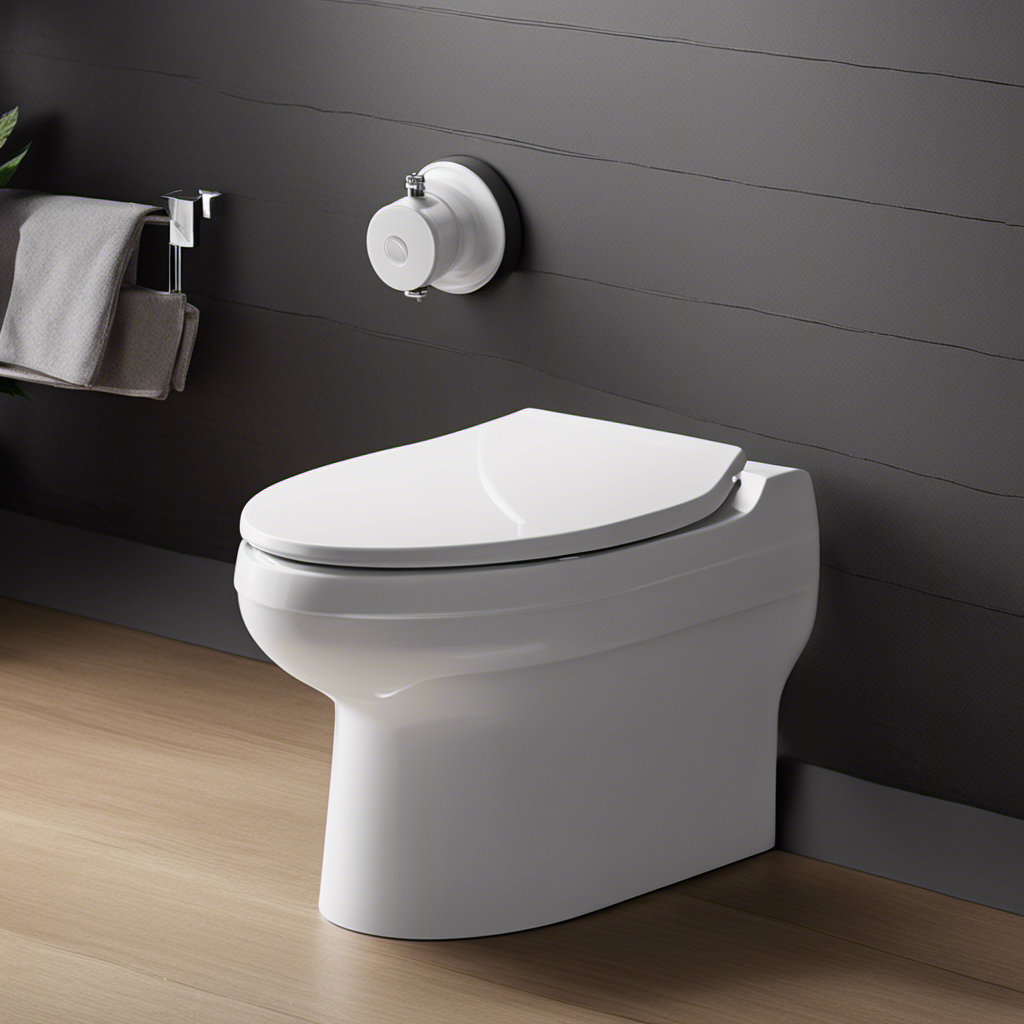As I sat down on the toilet seat, a thought crossed my mind – what could I possibly catch from this seemingly innocent object? It’s a question that many of us have pondered, and in this article, we will explore the truth behind the germs, bacteria, and viruses that may lurk on toilet seats.
From common bacteria to potential viral infections, we will delve into the world of microscopic organisms that could pose a risk to our health. But fear not, for we will also provide tips on how to maintain proper hygiene and reduce the risk of infection.
Key Takeaways
- Regular cleaning is crucial for maintaining proper toilet seat hygiene and reducing the risk of infection.
- The risk of contracting a viral infection from a toilet seat is relatively low compared to direct person-to-person transmission, but practicing good hygiene, such as washing hands thoroughly, minimizes the risk.
- Proper cleaning and disinfection of toilet seats prevent the transmission of parasites and other organisms that may be present.
- Toilet seats are not a common mode of transmission for sexually transmitted infections (STIs), and the main mode of transmission for STIs is through sexual contact. Using barrier methods such as condoms and dental dams helps prevent the transmission of STIs.
Common Bacteria Found on Toilet Seats
You may be surprised to learn that there’s a myriad of common bacteria lurking on toilet seats. Maintaining toilet seat cleanliness is crucial in preventing the spread of these harmful bacteria. Regular cleaning is of utmost importance to ensure a hygienic environment.
Bacteria such as Escherichia coli (E. coli), Staphylococcus aureus (staph), and Streptococcus can be found on toilet seats. These bacteria can cause various infections, including urinary tract infections (UTIs), skin infections, and respiratory infections. By neglecting to clean toilet seats regularly, we expose ourselves to these bacteria and increase the risk of infection. Therefore, it is essential to emphasize the importance of regular cleaning to maintain proper toilet seat hygiene.
Transitioning into the subsequent section, let’s delve into the viral infections that can be transmitted through toilet seats.
Viral Infections That Can Be Transmitted Through Toilet Seats
Viral infections can be transmitted through toilet seats. It is important to note that the risk of contracting a viral infection from a toilet seat is relatively low compared to direct person-to-person transmission. However, certain viruses can survive on surfaces, including toilet seats, for a short period of time.
One such viral infection that can be transmitted through toilet seats is the human papillomavirus (HPV). HPV is primarily transmitted through sexual contact, but it is also possible to contract the virus through indirect contact with contaminated surfaces.
Other viral infections, such as norovirus and the common cold, can also potentially be transmitted through toilet seats. It is important to practice good hygiene, such as washing hands thoroughly and regularly, to minimize the risk of viral infections.
Parasites and Other Organisms That May Be Present on Toilet Seats
If left uncleaned, toilet seats can potentially harbor parasites and other organisms. It is important to understand the common parasites found on toilet seats and the significance of proper cleaning and disinfection.
One common parasite that can be found is Enterobius vermicularis, commonly known as pinworms. These tiny, thread-like worms can cause itching and discomfort in the anal area.
Another parasite, Giardia lamblia, can also be found on toilet seats. This microscopic parasite causes gastrointestinal symptoms such as diarrhea and abdominal pain.
Proper cleaning and disinfection of toilet seats is crucial to prevent the transmission of these parasites. Regular use of disinfectant wipes or sprays can effectively eliminate any potential organisms, ensuring a clean and safe environment for everyone.
The Risk of Sexually Transmitted Infections From Toilet Seats
To minimize the risk of contracting sexually transmitted infections, it’s important to be aware that toilet seats are not a common mode of transmission. While it is unlikely to catch an STI from a toilet seat, there are other risk factors to consider.
Here are some important points to remember:
- The main mode of transmission for STIs is through sexual contact.
- Engaging in unprotected sex with an infected partner increases the risk of contracting an STI.
- Sharing needles or other drug paraphernalia can also lead to the spread of STIs.
- Using barrier methods such as condoms and dental dams can help prevent the transmission of STIs.
It is crucial to educate oneself about the proper prevention strategies and to practice safe sexual behaviors to reduce the risk of contracting sexually transmitted infections.
Tips for Maintaining Hygiene and Reducing the Risk of Infection From Toilet Seats
When it comes to maintaining hygiene and reducing the risk of infection, remember to always practice good hand hygiene after using the restroom. This is crucial in preventing the transmission of harmful bacteria and viruses.
To ensure proper cleaning, use a disinfectant wipe or spray to clean the toilet seat and surrounding areas before use. It is also important to avoid direct contact with the toilet seat by using toilet seat covers or creating a barrier with toilet paper.
Additionally, remember to flush the toilet with the lid closed to prevent the spread of germs through aerosolized particles.
Lastly, always wash your hands thoroughly with soap and water for at least 20 seconds after using the restroom. Following these simple tips can greatly reduce the risk of infection and promote overall hygiene.
Conclusion
In conclusion, it seems that the dreaded toilet seat may not be as terrifying as we once believed. While it is true that common bacteria can be found on toilet seats, the risk of actually catching something from them is quite low.
Viral infections and parasites are even less likely to be transmitted through this humble porcelain throne. And as for the myth of sexually transmitted infections from toilet seats, it’s time to flush that idea away.
By practicing good hygiene and common sense, we can keep ourselves safe and avoid unnecessary panic. So, fear not, dear readers, and let us bid adieu to the toilet seat hysteria.










